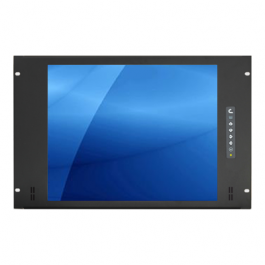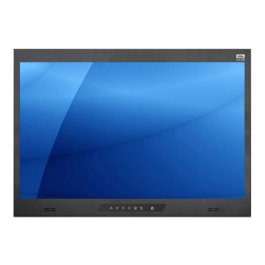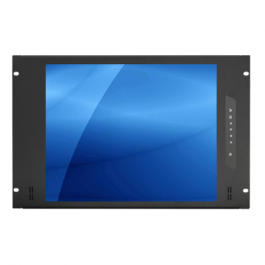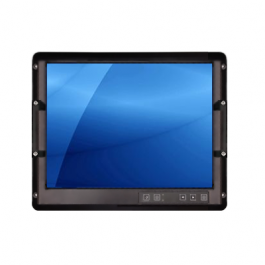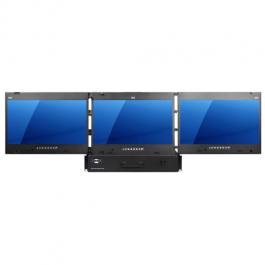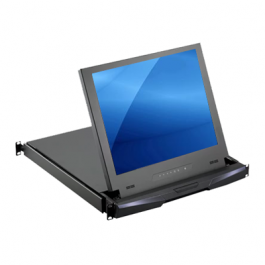Rackmount Monitors
Rackmount Monitors
REFERENCES
Rackmount Monitors & Rackmount Monitor Drawers for Industrial Display Applications
Rackmount monitors with brilliant displays and sturdy metal construction installed into a standard 19-inch wide rack cabinet, allowing it to operate under harsh working environments, which is ideal for industrial automation control and display monitoring applications. Rackmount LCD monitors are designed to be space-saving with compacted metal construction which is divided into two different styles; directly flush mount or rack monitor drawer with a built-in slide rail that allows the monitor to be pulled out from the rack and lifted up. Monitors drawer type comes with the flip-up design included low profile one rack U high drawer and adjustable rear mounting brackets. The flush mount type monitor comes with a front metal bezel with M5 mounting holes and a heavy-duty enclosure on the back of units, all the units come with an OSD (on-screen display) membrane switch that lets users adjust the screen display quality. It is a rugged unit specifically designed for commercial and military applications. Directly mountable units, on the other hand, have metal rugged housing and fit into the standard 19-inch rack cabinet. Tempered glass is mounted in front of the LCD panel to protect against impact and dust on the LCD panel, providing more efficiency and durability to the product for a longer life span. Each unit is equipped with an industrial LCD (liquid crystal display) panel which provides a flick-free, lightweight, slim size, and low power consumption display compared to the traditional CRT (cathode ray tube) display. Front panel controls such as the On/Off switch and OSD buttons are located on the front of the LCD monitor for easier access around the unit. These OSD functions allow you to adjust the LCD monitor for the best view and provides an auto-shutoff function, which enables the monitor drawer to go right back to its rest position right at the tip of your fingertips. Options are available for touch screen technology with RS-232 or USB connector, IP-rated front bezels, HDMI / Audio / SDI input, and DC power input.
Types of Touch Screens: Resistive, Capacitive, Projected Capacitive
A touch screen acts as an interface between humans and computers in an automation control unit. Unlike keyboards or mice, touch screens provide convenience and user-friendly access to receive information from one computer to another. Many industries require the use of touch screen computers to complete daily tasks, and often, these touch screens need to be able to withstand harsh and rugged working environments. The three types of touch screens available for the rackmount monitors include Resistive, Capacitive, and Projected Capacitive. A Resistive touch screen, which is the most widely used sensing method in the touch screen panel market, is composed of a glass panel and a film screen each covered with a thin metallic layer separated by a narrow gap. When a user touches the screen, the two metallic layers come into contact, resulting in electrical flow. The point of contact is detected by this change in voltage. The advantages of Resistive touch screens are that it is highly resistant to surface contaminants and liquids and can be activated with virtually any objects ( finger, stylus, gloved hand, pen, etc.). Next is the Capacitive touch screen, which is the second most popular type of touch screen on the market and is often used in relatively large display panels. A Capacitive touch screen monitor consists of a transparent electrode layer placed on top of a glass panel with a protective cover. When an exposed finger touches the monitor, it reacts to the static electrical capacity of the human body; some of the electrical charges transfer from the screen to the user. This decrease in capacitance is detected by sensors located at the four corners of the screen, allowing the controller to determine the touchpoint. Capacitive touch screens can only be activated by the touch of human skin or stylus holding an electrical charge. Lastly is the Projected Capacitive touch screen, which is composed of a sheet of glass with embedded transparent electrode films and an IC chip that creates a three-dimensional electrostatic field. Projected Capacitive touch screens can be activated with bare fingers, surgical gloves, or thin cotton gloves. The advantages of Projected Capacitive touch screens include multi-touch capabilitiesies and excellent image clarity.





